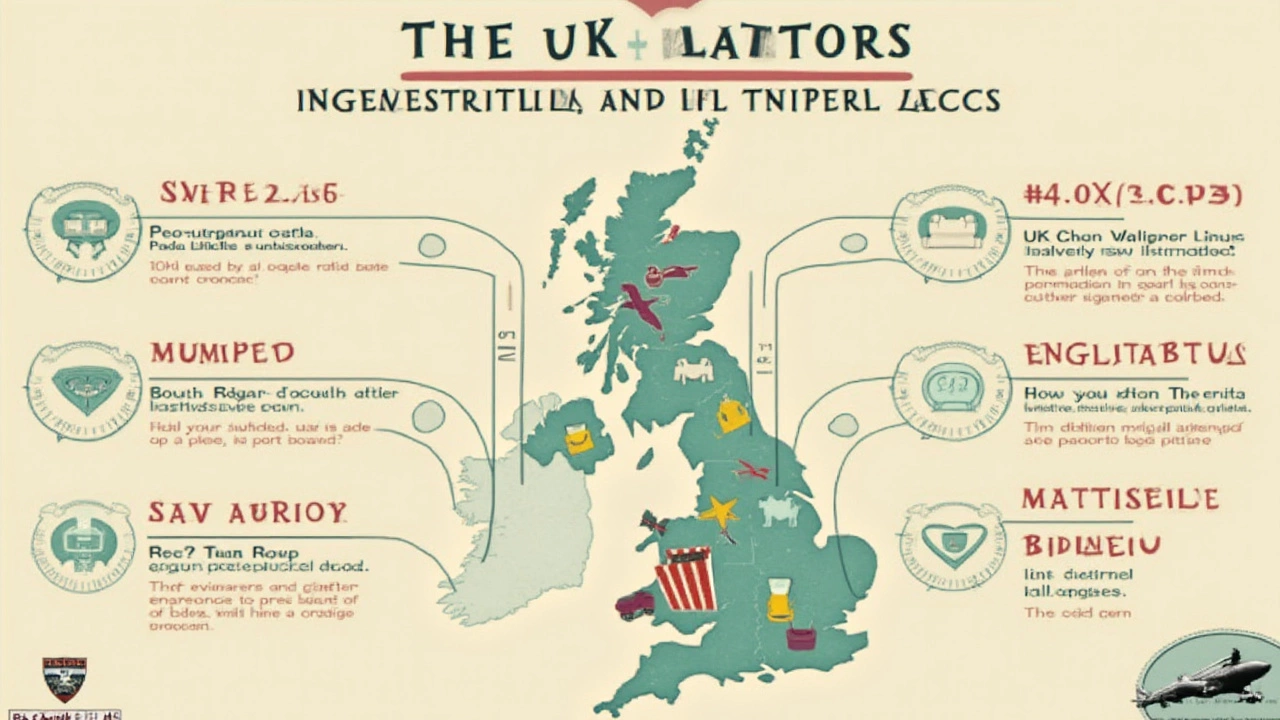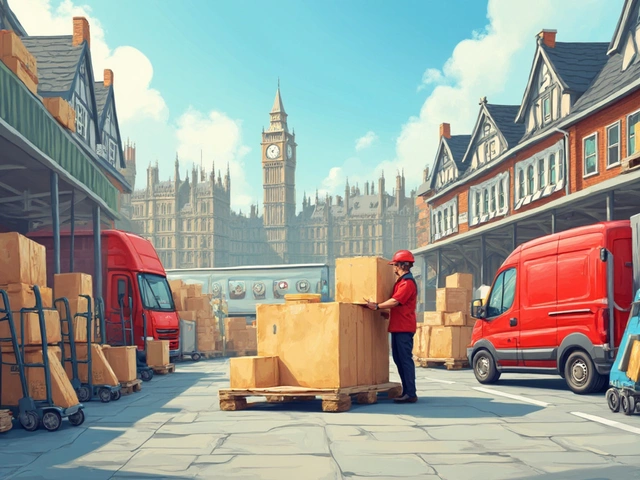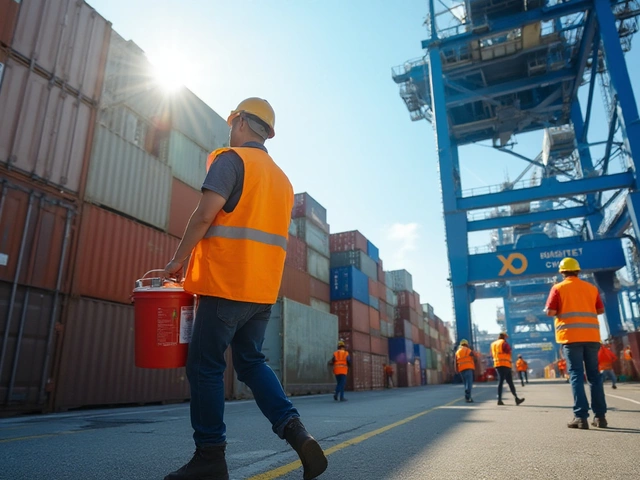So you're staring at this package and wondering how to come up with a fair delivery fee without scaring off your customers or losing money yourself. It's a balancing act, really. The fee can't just pop out of thin air, though!
First, consider the distance. Yep, longer trips mean more fuel and manpower, so it's no shocker that distance plays a huge role. And don't forget about those tiny detours that can add up on fuel costs.
Next up is the size and weight of the package. Take a second to imagine hauling a grand piano versus delivering a bunch of fluffy pillows. Yup, more weight and bigger size often mean more money, as simple as that.
Still with me? Great. Now, let's talk about urgency. Imagine someone needing their wedding dress pronto and willing to pay extra to get it fast. Yep, delivery speed can be a game-changer here.
- Factors Affecting Delivery Fees
- Distance and Fuel Costs
- Package Weight and Size
- Delivery Speed and Urgency
- Technology and Tools for Calculation
- Balancing Profit and Customer Satisfaction
Factors Affecting Delivery Fees
Figuring out how much to charge for a delivery fee can feel like piecing together a puzzle, especially with so many moving parts. But if we break it down, it starts to make a lot of sense. Let's check out what exactly drives these costs.
Distance and Fuel
First things first: distance. This is probably the most obvious factor, right? The farther the package needs to travel, the more fuel the delivery vehicle will gobble up. Gas isn't cheap, and neither is time. So, longer distances usually mean higher delivery fees. It's like hailing a cab; the meter starts ticking from the moment you hop in.
Package Size and Weight
Now, remember physics class? Heavier and larger packages require more effort and, often, special handling. It's like the difference between shipping a feather and a bowling ball. So, fees naturally ramp up with weight and size. Shipping carriers often have different tiers and might even use dimensional weight to determine costs.
Delivery Speed
Urgent deliveries are basically the express lane of the courier world. People pay extra to ensure their package arrives tomorrow rather than next week. Naturally, where speed is key, the costs climb. Think of how ordering a same-day pizza delivery costs a bit more for that immediate cheesy goodness.
Value of the Package
The worth of what you're shipping can also play a role. High-value items might need extra insurance or security measures, which get factored into the delivery fee. Some services offer special handling for these valuable goods to protect them during transit.
Total Stops
Lastly, many stops can pump up the fee. If a driver has to make multiple deliveries instead of a single point-to-point trip, they'll spend more time (and maybe money) on the road. It's all about the route efficiency.
Understanding these factors helps crack the mystery behind delivery fees and how to set them wisely. Get it right, and you'll strike a neat balance between being fair and making a tidy profit.
Distance and Fuel Costs
Alright, so let's break it down. You've got a package and a destination, and between those two is where the magic—or rather, the delivery fee—happens. The most straightforward part of the calculation? The distance. The further you need to travel, the more it will cost in terms of time and fuel.
If you're covering long distances, this can mean a significant part of the delivery fee. It's based on the assumption that the longer a driver is on the road, the higher the gasoline consumption. And trust me, gas isn't cheap. The national average of gas prices in the US has hovered around $3.50 per gallon in recent years, but it can vary depending on the location.
Influence of Terrain and Traffic
What’s not immediately obvious is the influence of terrain and traffic conditions. If you're delivering across a city known for its traffic jams or through mountainous terrains, expect the fuel expenditure to shoot up due to frequent starts and stops, or those uphill climbs. It adds time too, which might mean more in terms of hours paid to the driver.
Fuel Efficiency
Another crucial factor? The type of vehicle used. Modern delivery services often rely on fuel-efficient vehicles to keep costs down. But if you're using a van versus a small car, there's an obvious difference in fuel costs. Vans consume more fuel, especially when fully loaded.
Here’s a simple list of what you might need to consider:
- Average miles per gallon of your vehicle
- Gas prices in the area
- Traffic conditions and possible delays
- Type of terrain (flat roads or hilly regions?)
Incorporating these details can help make your delivery fee more precise and fair. Next time you're calculating, picture these roads, those traffic lights, and that gas station pit stop. It all adds to the bottom line!
Package Weight and Size
When it comes down to it, package weight and size aren't just stats on a shipping label. They play a crucial part in determining delivery fees. Heavier and bigger items require more resources to transport, influencing the overall cost.
Why Weight Matters
Heavier packages mean more fuel consumption and possibly the need for heavier-duty transportation. Most courier companies use weight brackets for their pricing models. For instance, sending a package weighing between 5 and 10 kgs might cost more than those under 5 kgs.
The Importance of Size
It's not all about weight; size or volume matters too! Some packages might be lightweight but take up a lot of space, like pillows or balloons. Most delivery services calculate the "volumetric weight" using formulas to decide pricing based on both size and weight. This ensures that large, bulky items aren't undercharged.
How to Measure Correctly
To get an accurate fee estimation, measuring your package correctly is essential:
- Weigh it: Use a scale and round up to the nearest half kilo.
- Measure dimensions: Note down the length, width, and height of the package. Always use centimeters for consistency.
- Calculate volumetric weight: Use the formula: (Length x Width x Height) / 5000. Compare this with the actual weight, and the higher one determines your fee.
Understanding how weight and size impact delivery fees helps you better manage costs—something both shippers and receivers will appreciate!

Delivery Speed and Urgency
We've all been there—something comes up, and suddenly, that package you thought could stroll leisurely to its destination needs to move at lightning speed. That's where delivery speed and urgency come into the fee equation. The faster the delivery, the more it typically costs.
The Need for Speed
Express or same-day options are all about getting that item from point A to B in record time. But it makes sense, right? Couriers shift their schedules, prioritize urgent packages, and sometimes even work outside regular hours to make it happen. Couriers often have to pay overtime or drive longer miles without the usual route efficiency, which drives costs up.
When Speed Matters
Urgent deliveries aren't just about personal convenience. They play a crucial role in business operations, too. Think about industries like healthcare, where speed can be critical for delivering medical supplies, or e-commerce companies aiming to keep their competitive edge by offering same-day delivery.
Price Differences
| Delivery Type | Estimated Extra Cost |
|---|---|
| Standard | No extra cost |
| Express (24-48 hours) | 10-20% more |
| Same-day | 50-70% more |
As you see in the table, opting for faster delivery options can significantly increase the shipping cost. It gives you an idea of why being prepared helps in making those urgent delivery decisions more mindfully.
So, next time you find yourself in a time crunch, this info may help you understand the fee and plan your courier services better. And who knows, maybe you'll get a tip or two on when to splurge for speed!
Technology and Tools for Calculation
Alright, let's face it. Doing math manually isn't everyone's cup of tea. Technology swoops in like a superhero here. Seriously, a bunch of courier services wouldn't survive without some decent tech help! If you're looking to streamline the process, there are several tools and platforms that can help make calculating a delivery fee a breeze.
Software Solutions
First off, specialized software solutions are a go-to for many businesses. Think RouteSavvy, Onfleet, or DispatchTrack. These tools have some neat algorithms to calculate fees based on distance, weight, urgency, and more. Even if you're not tech-savvy, many of these platforms offer tutorials to get you started.
Online Calculators
For those who want something simple, online calculators might be your thing. Companies like UPS and FedEx host free calculators on their websites, which can give you a pretty accurate estimate. Pop in the dimensions, weight, and destination, hit enter, and voila!
APIs for Integration
If you're running a digital shop or a courier platform, integrating an API can be a total game-changer. Check out EasyPost or Shippo. These are designed to seamlessly calculate shipping rates within your existing system. It's like adding a new puzzle piece — only this piece helps with pricing strategy.
Here's a quick look at some popular tools and their features:
| Tool | Features |
|---|---|
| RouteSavvy | Route optimization, cost estimation, vehicle tracking |
| Onfleet | Real-time analytics, delivery optimization, API integration |
| EasyPost API | Label generation, tracking, multi-carrier support |
These tech tools not only save time but also help in accuracy, ensuring you're not lowballing or overcharging. So, the next time you set a shipping cost, let tech handle the heavy lifting!
Balancing Profit and Customer Satisfaction
When it comes to delivery fees, getting that balance right between making a buck and keeping customers happy can make your head spin. But it doesn’t have to be all guesswork; there are some tried-and-true methods to make this juggling act a little easier.
Understanding Margins
Start by knowing your costs inside out. This means fuel, package handling, and even those sneaky little admin fees. Knowing your expenses helps set a baseline, and from here, you can figure out what's what with your profit margins. The idea is to ensure your pricing strategy covers costs while leaving a bit of wiggle room for profit.Offering Choices
Your customers love options, right? Offering a tiered pricing model based on delivery speed can be a huge win. For instance, let them choose between standard delivery at a lower price or an express option at a premium rate. This approach respects the fact that some folks aren't in a mad rush, while others might have a last-minute gift emergency.Transparency Builds Trust
Being upfront about why your delivery fee is what it is builds trust and loyalty. Instead of a flat like-it-or-not rate, breaking it down into understandable pieces can help customers see where their money's going. It’s like letting them in on the secret ingredients of your pricing lasagna.Emphasize Value Not Just Cost
Highlight the benefits of your service. Use customer feedback as testimonials to underline reliability. If you deliver faster or handle packages with extra care, shout it from the rooftops. Caring for their package as much as they do translates to value. They’ll see your fee as worth every penny.Data-Driven Adjustments
No need to fly blind! Use tools to analyze what’s working and what needs a tweak. By tracking deliveries and surveying customer satisfaction, adjustments can be made to ensure the fee aligns with expectations. This keeps your customers smiling and your business booming.| Factor | Impact |
|---|---|
| Base Delivery Cost | Covers the essentials like fuel and logistics |
| Delivery Speed | Influences price based on urgency |
| Customer Options | Tiered services for different needs |
| Transparent Pricing | Builds trust and mitigates frustrations |





